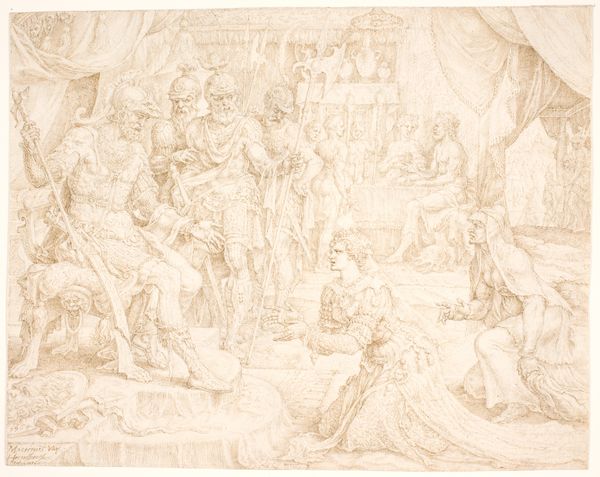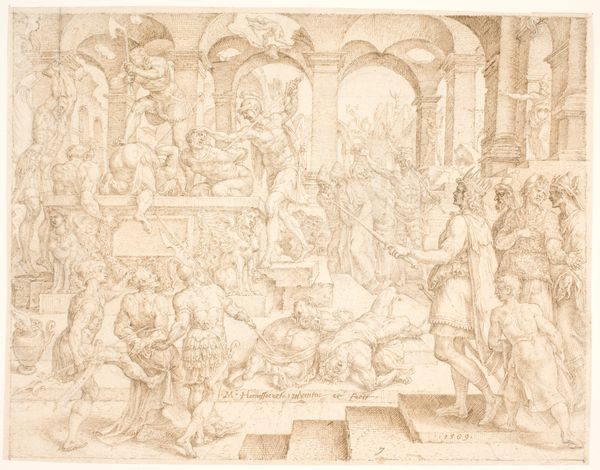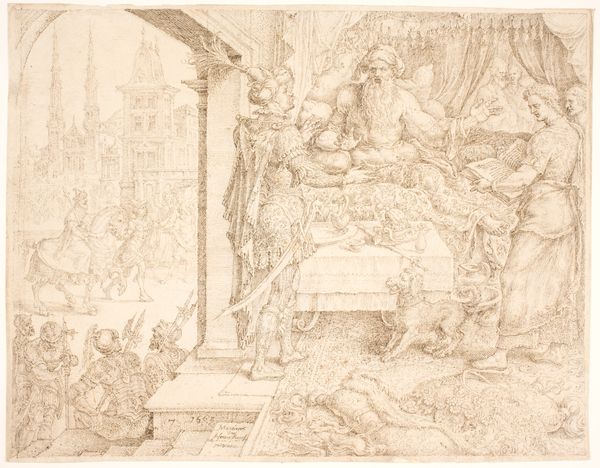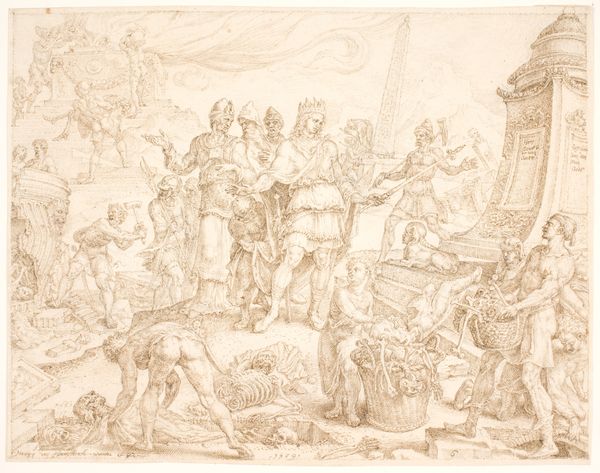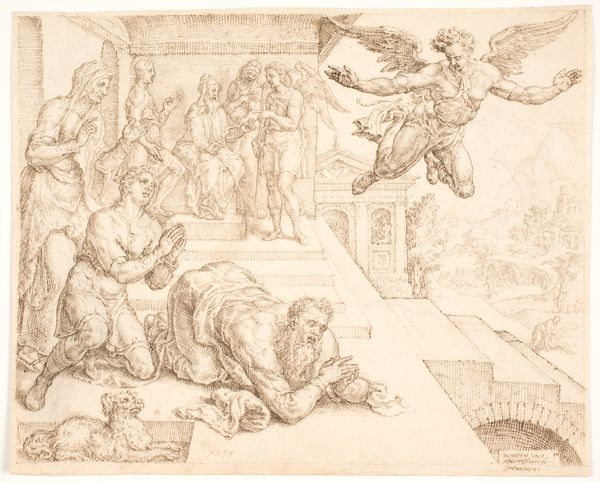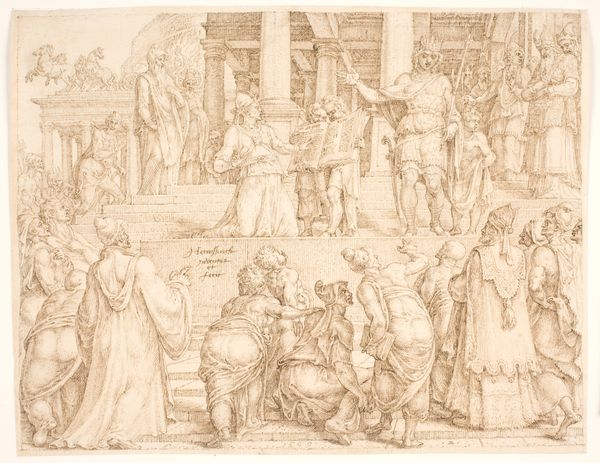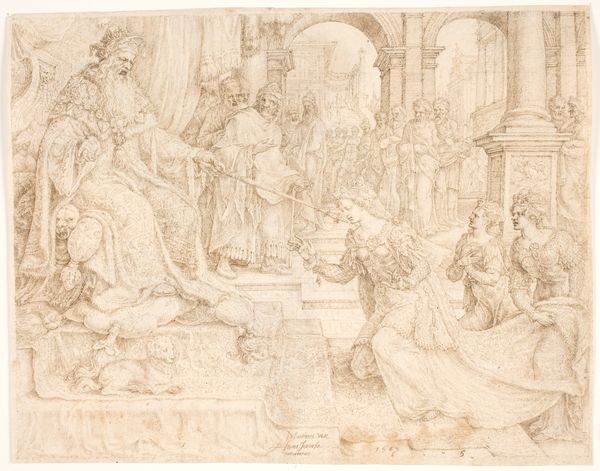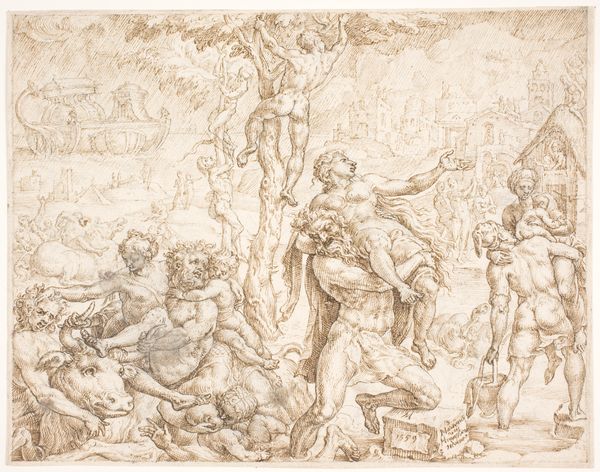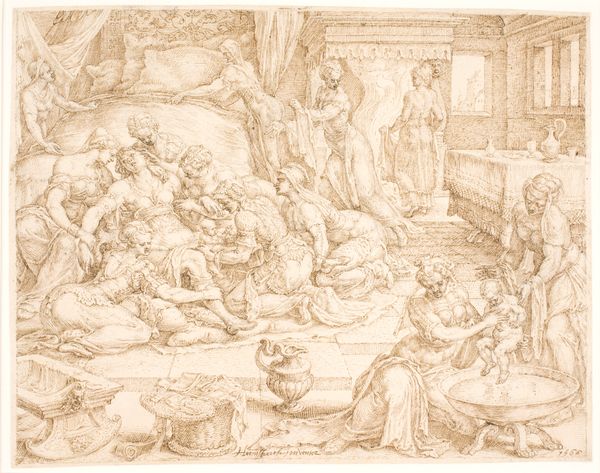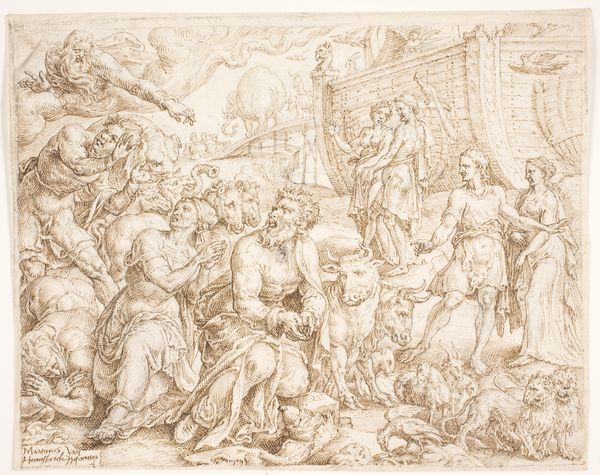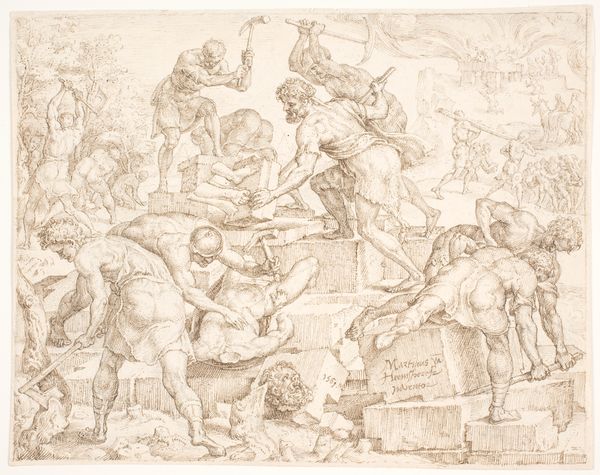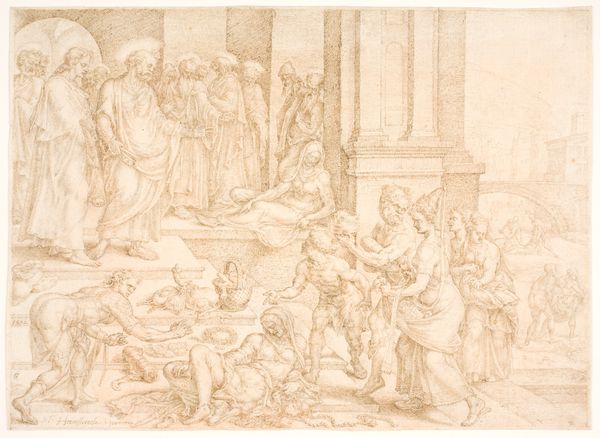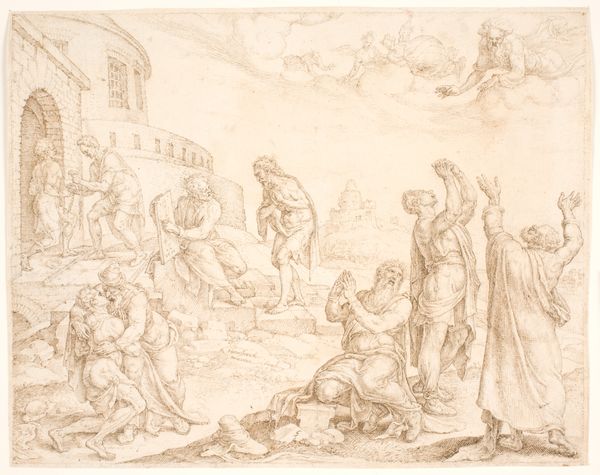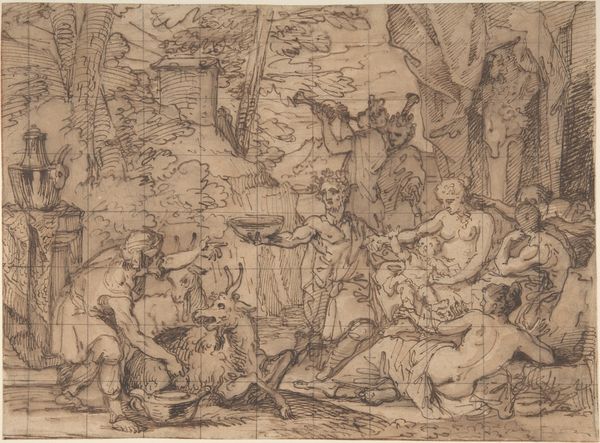
Josias befaler, at alle ting, der var lavet til Ba'al, skal ødelægges og præsterne dræbes 1569
0:00
0:00
drawing, ink
#
drawing
#
ink drawing
#
narrative-art
#
ink painting
#
pen sketch
#
mannerism
#
ink
#
history-painting
Dimensions: 200 mm (height) x 258 mm (width) (bladmaal)
Curator: Here we have Maarten van Heemskerck's "Josias befaler, at alle ting, der var lavet til Ba'al, skal ødelægges og præsterne dræbes," created in 1569. It's a rather frenetic ink drawing, currently held at the SMK. Editor: My immediate reaction is one of chaos and violence. There's a disturbing energy to it, even in the delicate lines of the ink. A sort of orchestrated brutality is rendered with this strangely detached elegance. Curator: Indeed. Van Heemskerck often grappled with religious and political turmoil. This piece depicts a scene from the Old Testament, where King Josiah orders the destruction of idols dedicated to the god Baal. You can read this through a postcolonial lens, for example, and examine how such narratives of religious purity historically intersect with acts of cultural erasure. Editor: Absolutely. The symbols are potent. The idol of Baal looming in the background speaks to a perceived threat, a deviation from a purer faith. The acts of destruction aren't just physical; they represent a forceful reassertion of cultural and religious dominance. The repeated iconoclasm that sweeps through human societies speaks of a profound psychological need to reject or displace the other. Curator: Consider also the artist's stylistic choices. The exaggerated musculature and dramatic poses are characteristic of Mannerism. However, they simultaneously convey a sense of controlled hysteria. This stylistic choice emphasizes the complexities embedded within power structures and how these dynamics can lead to violent action. Editor: And those dynamic lines contribute so much. Notice how figures in the foreground are clearly defined. As we recede to the background, they dissolve. Van Heemskerck makes a choice. Is the message here the cost of intolerance and singular ideology? Or that zealous destruction is the only righteous option? It isn't clear to me here and that's why it fascinates me so. Curator: A crucial question, and I agree on the power of ambivalence that allows it to exist within the work. Van Heemskerck's drawing presents a fraught image, leaving us to grapple with how these ancient struggles for identity and religious purity continue to resonate within our contemporary socio-political context. Editor: It seems van Heemskerck invites us to recognize and possibly reckon with humanity's penchant for rewriting history. It's this quality of his ink drawing that has struck me, prompting deeper thought.
Comments
No comments
Be the first to comment and join the conversation on the ultimate creative platform.
